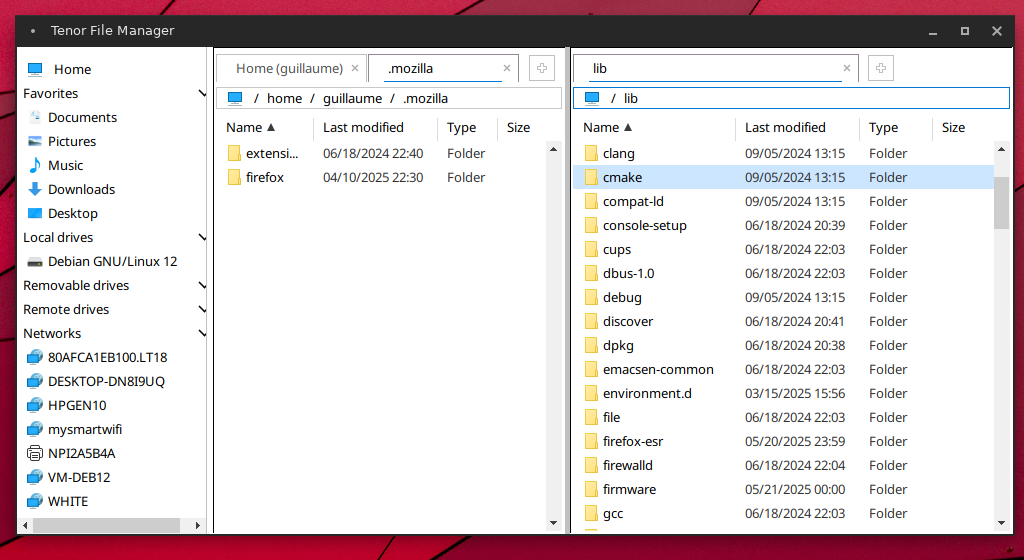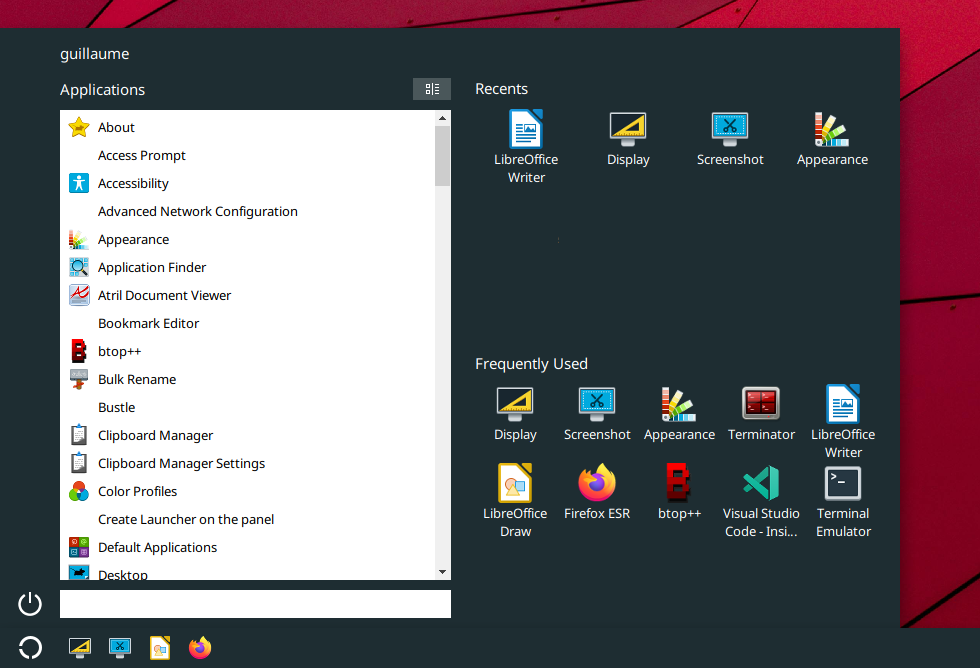A Modern File Manager
Tenor's file manager is built for productivity. It supports tabbed browsing and split-view mode, making file operations like copy and move fast and intuitive even across distant directories.
Naturally, it includes all the essential tools you'd expect from a modern file manager: drag and drop, context menus, file previews, keyboard shortcuts, archive support, and more. Everything you need to manage your files efficiently is right at your fingertips.

Beyond local files, it offers seamless access to remote locations using CIFS/SMB, WebDAV, FTP, and SSH (SFTP) protocols. You can connect to servers or embedded devices with ease, directly from the file browser.
It also features automatic network discovery, integrating support for mDNS (Bonjour/Avahi), Windows Services (WS), and DLNA devices. This makes shared folders, media servers, and local machines instantly visible and accessible without any manual configuration.
A Classic Taskbar
Tenor features a classic, efficient taskbar designed for clarity and control. It displays your running applications, lets you pin favorites, and organize them for quick access.

Essential system shortcuts and common actions are just one click away.
At its core is a menu that gives you instant access to installed apps whether it's your most recently used, most frequent, or any app found through a fast search.
An Organized Desktop

The Tenor Desktop Manager provides a simple and functional workspace, where icons are neatly displayed over your wallpaper. It offers a familiar environment where your files, folders and shortcuts, are always within reach.
Just like the file manager, it supports basic file and folder operations directly on the desktop (rename, delete, open, drag-and-drop..). And with Tenor, no more clutter or overlapping icons: everything stays aligned, tidy, and predictable.
A Session Manager
At the heart of Tenor lies its Session Manager, the central component responsible for orchestrating the user's desktop experience. It handles session lifecycle, from login to logout, ensuring applications start reliably and consistently.
The Session Manager also takes care of mounting remote resources, including network shares, ensuring they're ready when you need them. Whether you're on a local machine or working across the network, it keeps your session connected and responsive.
It integrates seamlessly with common Linux display managers like GDM, LightDM, and SDDM, making it easy to deploy across different systems and distributions.
Next steps
Additional components are planned, but for now the focus remains on finalizing the core elements described above to ensure a solid and reliable foundation.